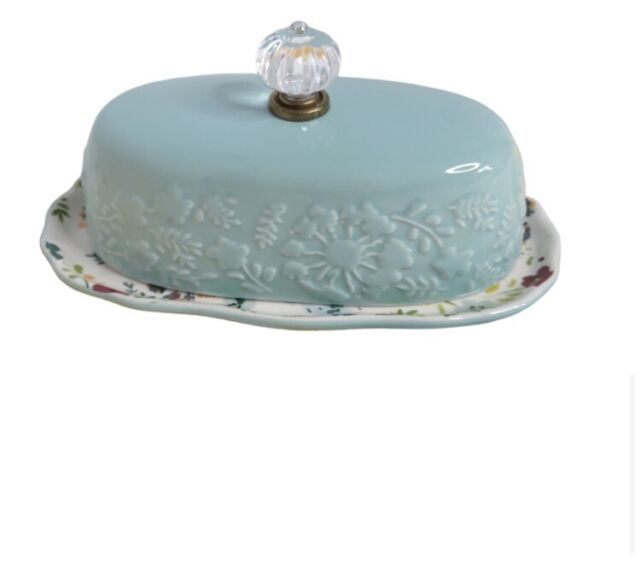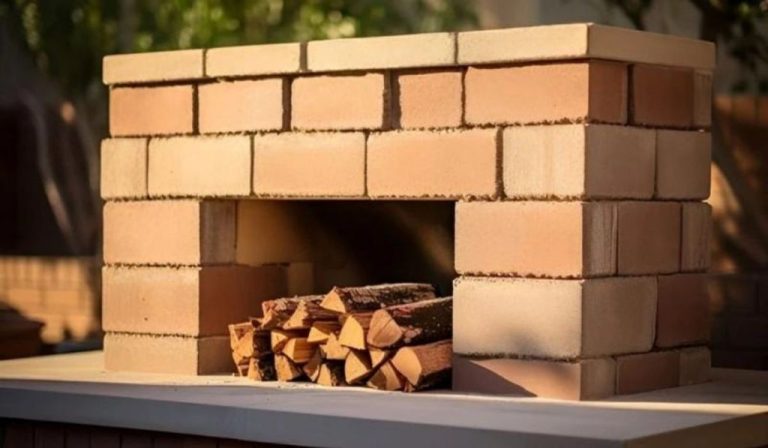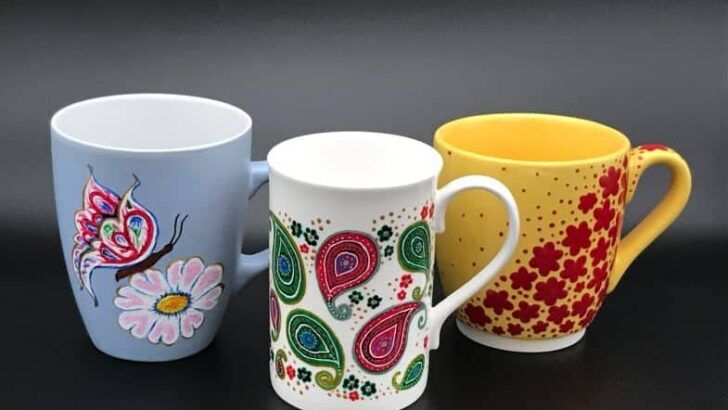How To Make Yellow With Clay?
Working with yellow clay can add brightness and warmth to pottery pieces. The cheerful sunny hue enlivens any space. While natural yellow clays exist, most clays can be colored yellow through techniques like staining, painting, or glazing.
Crafting yellow clay has many benefits for potters. Adding yellow accents draws the eye and creates focal points on pottery. The vibrant tone pairs beautifully with other colors like blue, green, and red. Yellow clay projects require learning versatile techniques like glazing, staining, painting that can be applied to other colors. Experimenting with different yellow hues like lemon, gold, or mustard allows for creativity. Overall, yellow clay offers potters luminosity, visual interest, and joy.
Selecting Clay
When working with clay to achieve a vibrant yellow color, the type of clay you select is an important consideration. Certain clays have properties that make it easier to create bold, saturated yellows without dulling or muting the tone. Meanwhile, other clays contain minerals like iron that can inhibit achieving a bright, sunny yellow.
Polymer clays are often a good choice for making yellow pieces, as they provide very pure base color that takes pigments and dyes well. Polymer clays like Sculpey and Fimo accept acrylic paints and oil paints evenly across the surface. Similarly, terra cotta, white earthenware, and porcelain tend to yield the truest yellows. The smooth, light texture of these clays make it easy to achieve consistent coverage when painting or glazing.
On the other hand, some clays present challenges for creating clean yellow tones. Natural clays with higher iron content introduce speckles and earthy tones that distort the color. Likewise, stoneware and terracotta can bake to an orangey hue that skews yellow pieces towards a mustard or amber tone. Doing test samples with your selected clay is recommended to ensure you can actually achieve a bright, primary yellow.
Natural Yellow Clays
Some types of natural clay have an inherent yellowish tone that can be used when making yellow clay items. Here are some of the most common types of natural yellow clays:
Yellow Ochre Clay – This clay has a rich golden yellow color. It is an iron-rich clay that gets its pigment from the mineral limonite. Yellow ochre clay can be found in many locations around the world. Good sources include France, the Eastern United States, and Cyprus.
Mustard Clay – As the name suggests, this clay has a bright mustard yellow color. It contains a high amount of iron oxide, which gives it the yellow pigment. Mustard clay deposits can be found in several regions in the United States and Canada.
Yixing Clay – This clay from China has a natural earthy, brownish-yellow color. Within the broad category of Yixing clay, particular reserves known as Huanglong and Zhusha have a distinct yellow tone.
When using natural yellow clays, it’s important to source them from reputable suppliers to ensure color consistency. Try testing small samples before using the clay in finished pieces. Natural clays provide an organic way to achieve yellow tones without having to add colorants.
Staining Clay
Staining is a great way to add vivid yellow tones to your clay. There are a variety of stain options that work beautifully with clay:
- Oil-based stains like linseed oil create a nice saturated yellow.
- Acrylic paint can be thinned with water and used as a wash to stain the clay.
- Food coloring diluted with water makes a safe, vibrant stain.
- Curcuma or turmeric powder mixed with water produces a lovely golden yellow stain.
- Mustard seed soaked in water and strained creates a bold, tangy yellow stain.
To stain clay:
- Make sure your clay is clean and dry. For best results, use unglazed bisqueware.
- Select your chosen stain and prepare it according to the product instructions.
- Using a cloth or brush, apply the stain liberally to the clay surface.
- Allow the stain to soak in for at least 30 minutes. For more saturated color, leave overnight.
- Once saturated, wipe off any excess stain with a clean cloth.
- Seal with a clear glaze or topcoat if desired.
Staining is a simple way to infuse rich, translucent yellow tones into your clay work.
Painting Clay
Painting fired or unfired clay is a great way to achieve a vibrant yellow color. The two most common paint types used are acrylic and oil paints. Both have their advantages and disadvantages when used on clay:
Acrylic Paint
– Dries quickly, making it easy to layer multiple coats in succession.
– Has a matte finish that works well on porous clay surfaces.
– More affordable than oil paint.
– Can peel or flake if painting unfired clay and not properly sealed.
Oil Paint
– Provides a glossy, enamel-like finish.
– Has excellent adhesion to fired ceramics.
– More expensive than acrylic.
– Requires sealing to fully cure.
When choosing a yellow paint for clay, look for an acrylic or oil paint specifically formulated for ceramics. These will have durability, lightfastness, and the ability to withstand firing. A bright cadmium or lemon yellow hue will give the most vivid results.
Glazing Yellow Clay
Glazing is one of the most effective techniques for achieving a bright, vibrant yellow on clay. Glazes provide a glossy coating that allows the color to really pop. There are many glaze recipes and options to get that perfect sunny yellow.
The most common yellow glaze ingredients include yellow ochre, zinc oxide, titanium dioxide, and tin oxide. These materials can be combined with silica, feldspar, kaolin, and other glaze components. A simple recipe is mixing zinc oxide with frit 3134. Adding more zinc oxide yields a brighter yellow while decreasing it mutes the tone. Cadmium yellow can produce a brilliant lemony glaze but it is toxic.
For application, make sure the clay is bisque fired first before applying any glaze. Use a brush, sponge, or pouring technique to coat the clay evenly. Apply 2-3 thin layers instead of a single thick one to prevent dripping. Allow each layer to dry before adding the next. Once fully dry, the glazed clay can be fired to around cone 06-04 to fuse the glaze. This results in a shiny, durable yellow finish.
Glazing provides endless options for decorative yellow effects. Try swirling on different yellows or layering with other colors. Use resists, like tape or wax, to create patterns. Experiment with matte glazes for a muted look or add textural materials. The possibilities are endless!
Firing Yellow Clay
The ideal firing temperature for yellow clay depends on the specific type of clay body and glaze used. Generally speaking, cone 04-06 (1945-2232°F / 1063-1222°C) is a good target range for firing vibrant yellow colors. However, some natural yellow clays and glazes can withstand higher temperatures up to cone 10.
Here are some tips to prevent color loss and optimize yellow hues when firing:
- Avoid over firing clay, as high temperatures may burn out yellow pigments. Test samples first to determine the clay’s limit.
- Use an electric kiln for more uniform temperatures compared to gas or raku kilns.
- Fire in an oxidizing atmosphere with sufficient air flow to maximize vivid yellows.
- Place yellow pieces towards the center of the kiln, away from elements that generate more heat.
- Keep pieces spaced apart for even heat distribution and air circulation.
- Increase firing time and go low-and-slow, especially for deeper, richer yellow glazes.
- Add a hold time at max temperature to mature the clay and glaze colors.
Test firing individual pieces first, rather than entire loads, when experimenting with new clays, glazes, or kiln settings. Take notes each time to refine the firing process for consistently vibrant yellow finishes.
Sealing Yellow Clay
Sealing yellow clay pieces after firing provides numerous benefits. Sealing creates a protective barrier on the surface of the clay, which helps prevent moisture absorption, increases durability, provides stain resistance, and enhances the vibrancy of colors. There are several types of sealants that work well for sealing yellow clay:
Acrylic resin – Acrylic resin seals are water-based and provide a satin finish. They are easy to apply with a brush or by dipping and are non-toxic. Acrylic resin seals enhance color while allowing the clay’s surface texture to show through.
Polyurethane – Polyurethane seals are solvent-based and provide a high gloss finish. They are extremely durable and moisture resistant. Polyurethane works well for protecting decorative or functional yellow clay pieces. Multiple coats may be needed for an even glossy finish.
Beeswax – Beeswax provides a natural satin seal for clay. It is easy to apply by rubbing beeswax on the bisque fired surface. Beeswax enhances vibrancy of colors and gives a smooth feel. It provides light protection from moisture and stains.
Epoxy resin – Epoxy resin seals provide a thick, plastic-like coating and a deep, glassy finish. They are extremely durable and waterproof. Epoxy resin works well for jewelry pieces, bowls and items that need more protection. The finish is shiny and clear.
Troubleshooting Yellow Clay
If your yellow clay results in muted, dull tones or the color is uneven, there are a few ways to troubleshoot and try to achieve a brighter, consistent yellow:
First, try re-staining the clay by applying additional layers of yellow stain/paint and letting it fully dry in between coats. The more saturated the clay becomes, the richer the yellow tone will get. Just be careful not to oversaturate to the point where the clay becomes gummy.
Another option is to re-fire the clay at a slightly higher temperature which can intensify the existing yellow color. Keep in mind this risks darkening or altering the clay color so test on a small sample piece first.
If neither restaining nor refiring gives you the desired yellow, the clay body itself may be too porous, absorbent or prone to muted hues no matter what you do. In that case, try a higher quality clay formulated for vivid results.
Lastly, make sure to properly seal yellow clay pieces when finished. A sealant like polyurethane will lock in the vibrancy and prevent the color from fading over time.
Inspiration
Yellow clay can add a bright, sunny touch to pottery, sculptures, and decorative pieces. Here are some examples of vibrant yellow clay art to provide inspiration:
Examples of vibrant yellow clay pieces
Some potters create entire sets of tableware, like plates, cups, and bowls, in different shades of yellow. The color creates a warm, inviting mood. Yellow glazed vases and containers also showcase the lively hue.
Sculptors sometimes craft yellow clay sculptures of animals, shapes, and abstract art. These eye-catching pieces enliven galleries, parks, and homes. Figurines of people can also be made from yellow polymer or modeling clay.
In jewelry, bright yellow beads and pendants stand out when wired into necklaces, bracelets, and earrings. Yellow clay cabochons offer an alternative to precious gems. Southwestern, tribal, and Native American style jewelry often incorporates sun-like yellow hues.
Creative ways to use yellow clay
There are many fun, innovative ways to utilize yellow clay in DIY and craft projects. Make yellow clay gift tags, ornaments, sun catchers, or table numbers for events with a summery theme. Yellow tiles or accents on planters liven up plant displays. Use yellow clay to shape one-of-a-kind lamp bases, pencil holders, and decorative boxes.
Kids enjoy working with the warm, bright color to make clay magnets, bookmarks, and their own toy creations. Yellow clay can be rolled flat and cut into unique decorative shapes. It also easily impresses with texture when pressed against lace, burlap, leaves, or other materials.



